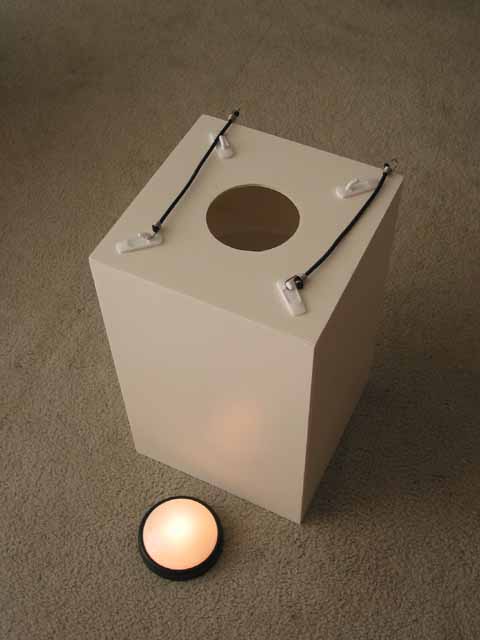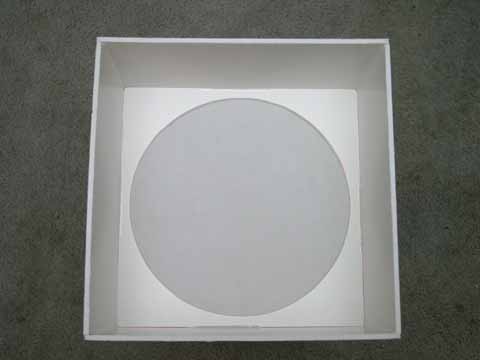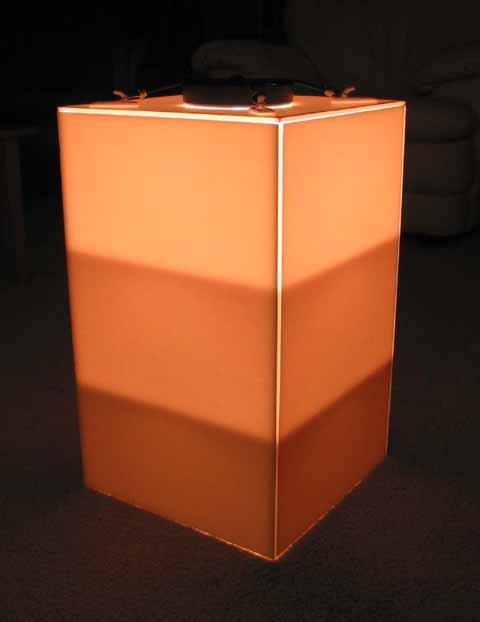
|
After struggling with getting good flat fields for my images, I finally decided to build myself a light box.
|
|
|
|
I used foam core (available at office and art supply stores) for the structure. All the pieces are held together by hot-melt glue. The light source is one of those "tap lights," which I used because it is already a pretty diffuse light source, and I happened to have one lying around.
|
|
|
|
Basically, it's a box about 20 inches long and 12 inches square (inside dimensions). This lets it fit over the end of my 10" with not too much room to spare, so it actually stays put. At one end of the box is a foam core panel with a hole in it to accept the light. There are some plastic hooks for little bungees to hold the light in place. About seven inches away from the light (toward the other end of the box) is the first diffuser. It is a piece of foam core with an 11" circular hole cut out of it. The hole is covered with drafting vellum. The second diffuser is about seven inches further down the box, with the same construction as the first. Here you can see what the second diffuser looks like, looking in the other end of the light box:
|
|
|
|
Here is what the light box looks like with the light on. You can see the positions of the two diffusers. There is about six inches at the bottom to fit over the end of the telescope.
|
|
|
|
And here is what the illuminated field looks like.
|
|
|
|
If you download this and bring it into something like PhotoShop and turn up the contrast, you will find that the field is actually not quite evenly illuminated. It's a bit brighter in the center. However I have not found this to be a problem in producing good flats. In any case, my flats are now vastly superior to anything I could produce before. |




